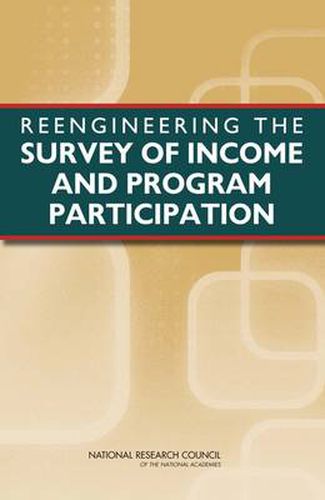Readings Newsletter
Become a Readings Member to make your shopping experience even easier.
Sign in or sign up for free!
You’re not far away from qualifying for FREE standard shipping within Australia
You’ve qualified for FREE standard shipping within Australia
The cart is loading…






Beginning in 2006, the Census Bureau embarked on a program to reengineer the Survey of Income and Program Participation (SIPP) to reduce its costs and improve data quality and timeliness. The Bureau also requested the National Academies to consider the advantages and disadvantages of strategies for linking administrative records and survey data, taking account of the accessibility of relevant administrative records, the operational feasibility of linking, the quality and usefulness of the linked data, and the ability to provide access to the linked data while protecting the confidentiality of individual respondents. In response, this volume first examines the history of SIPP and reviews the survey’s purpose, value, strengths, and weaknesses. The book examines alternative uses of administrative records in a reengineered SIPP and, finally, considers innovations in SIPP design and data collection, including the proposed use of annual interviews with an event history calendar.
$9.00 standard shipping within Australia
FREE standard shipping within Australia for orders over $100.00
Express & International shipping calculated at checkout
Beginning in 2006, the Census Bureau embarked on a program to reengineer the Survey of Income and Program Participation (SIPP) to reduce its costs and improve data quality and timeliness. The Bureau also requested the National Academies to consider the advantages and disadvantages of strategies for linking administrative records and survey data, taking account of the accessibility of relevant administrative records, the operational feasibility of linking, the quality and usefulness of the linked data, and the ability to provide access to the linked data while protecting the confidentiality of individual respondents. In response, this volume first examines the history of SIPP and reviews the survey’s purpose, value, strengths, and weaknesses. The book examines alternative uses of administrative records in a reengineered SIPP and, finally, considers innovations in SIPP design and data collection, including the proposed use of annual interviews with an event history calendar.